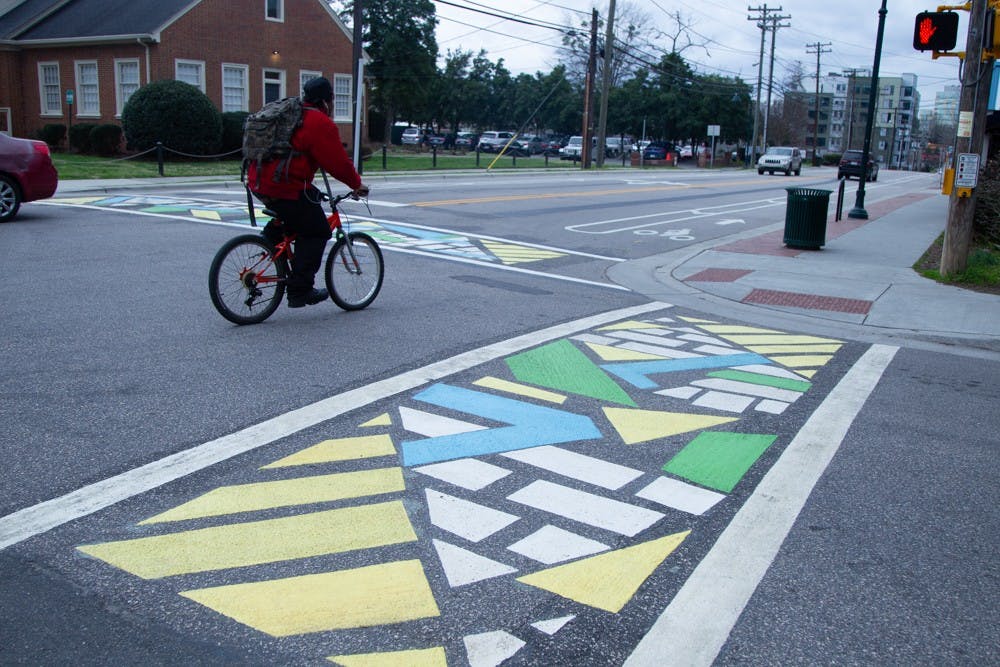The intersection between Rosemary Street and Church Street got a little brighter last Friday, with the traditional white-striped crosswalks replaced by new colorful patterns.
Melissa Bartoletta, marketing and communications coordinator for Chapel Hill’s Community Arts and Culture division, said the project is the final of four colorful crosswalks designed to merge art and pedestrian mobility.
Her team collaborated with the Chapel Hill Downtown Partnership to produce these crosswalks, which she said were inspired by similar successful projects in larger cities.
“The brick pattern in the background of the crosswalk design was inspired by the brick walkways around UNC’s campus and the brick architecture on Franklin Street,” Amy Hoppe, the artist who designed the Rosemary and Church Street crosswalks, said in an email.
Beyond the pattern, Bergen Watterson, Chapel Hill's transportation planning manager, said in an email that safety was a key consideration for the committee when choosing the crosswalk designs.
"We wanted to do artistic crosswalks to increase the visibility and draw drivers' attention," she said.
Steve Wright, Chapel Hill's public art coordinator who managed the Rosemary and Church Street project, said at the same time, they wanted the crosswalks to be recognizable.
Wright said the original committee included public safety and transportation professionals, and certain regulations were put in place so the crosswalks were not confusing. Each crosswalk still has the two distinctive white bars and is the same size as a traditional crosswalk.
But Watterson said there is no proof that colorful crosswalks improve safety, and Wright’s team has yet to collect any data on their effectiveness with the project still in its early days.



